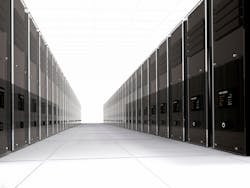Data centers have an impact on economic growth. A new PwC report commissioned by the Data Center Coalition (DCC) found that between 2017-2021, data centers added $2.1 trillion to the U.S. Gross Domestic Product (GDP) from direct, indirect, and induced effects over those five years.
PwC said the industry has emerged as a catalyst for economic growth, positively influencing several other aspects of the U.S. economy, including employment, labor income, and tax contributions to federal, state, and local governments.
In its study "Economic, Environmental, and Social Impacts of Data Centers in the United States," the U.S. data center industry witnessed a 17 percent growth in direct employment from 2017 to 2021. In comparison, overall U.S. employment increased by only two percent during the same period. PwC noted that the data center industry made significant tax contributions to federal, state, and local governments, totaling $403.5 billion from 2017 to 2021 due to direct, indirect, and induced impacts.
Also, the data center industry's growing contributions to the economy, the industry's total contribution to U.S. government revenues at the federal, state, and local levels increased by 50 percent between 2017-2021. PwC analyzed the U.S. data center industry's economic, environmental, and social impact from 2017-2021. This evaluation spans the national level and three specific states – Arizona, Ohio, and Virginia – selected for their significance to the data center industry and diverse market sizes. The report further investigates the industry's environmental and social contributions through surveys among DCC members.
"There is unprecedented demand for digital services from individuals and organizations of all sizes and industries, including telehealth, video conferencing, e-commerce, government services, education, and entertainment. As a result of this demand, the data center industry is rapidly growing," said Allison Gilmore, VP of DCC, who leads the organization's research initiatives. "This report shows that the benefits provided by the data center industry go far beyond serving the increasing digital data demands of our daily lives. Data centers are now essential infrastructure, enabling advancements throughout our modern digital economy.”
Community effects
The proliferation of data centers has various effects on U.S. communities: fulfilling consumer and business data demands and driving environmental efforts.
Data center providers have committed to purchasing clean energy and invested heavily to bring new clean energy solutions onto the electrical grid, accelerating the clean energy transition and making the industry one of the largest purchasers of sustainable power in the United States.
Additionally, data center companies nationwide are actively investing in their local communities by supporting programs for science, technology, engineering, arts, and mathematics (STEAM) education and workforce development, volunteering with neighborhood organizations, enhancing connectivity in rural areas, and undertaking various other beneficial initiatives.
Job creation
Another key element of the data center industry is its impact on job growth.
Between 2017 and 2021, the research firm said that the data center industry’s annual impact on national employment has grown from 2.9 million jobs in 2017 to 3.5 million jobs in 2021--up 20 percent. Based on preliminary government data for 2022, the industry is estimated to have added more jobs in 2022 than it added over the entire 2017-2021 period, resulting in 560,000 direct jobs and supporting 4.2 million total jobs across the country.
Further, PwC’s report found that “at the national level, each direct job in the data center industry supports more than six jobs elsewhere in the US economy (including both operational and capital spending impacts).”
The data center industry’s annual impact on national labor income grew from $209 billion in 2017 to $294 billion in 2021, a 40 percent increase. Also, the industry’s total annual impact on US value added grew from $355 billion in 2017 to $486 billion in 2021, rising 37 percent during the reporting period. During this same period, the growth rate in GDP for the entire US economy was only about half as much.
For related articles, visit the Data Center Test Topic Center.
For more information on optical components and suppliers, visit the Lightwave Buyer’s Guide.
To stay abreast of optical communications technology, subscribe to Lightwave’s Enabling Technologies Newsletter.
About the Author
Sean Buckley
Sean is responsible for establishing and executing the editorial strategy of Lightwave across its website, email newsletters, events, and other information products.

